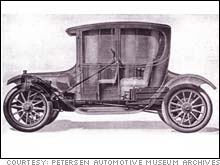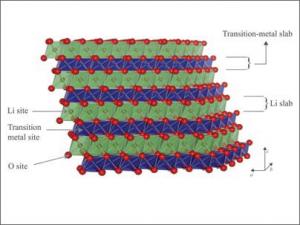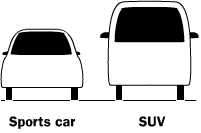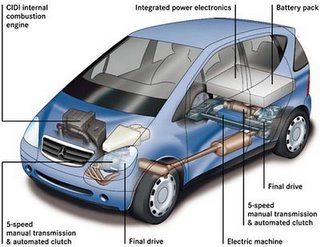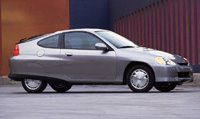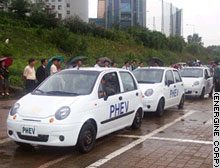
A Korean company has created a car engine that runs on air.
The engine, which powers a pneumatic-hybrid electric vehicle (PHEV), works alongside an electric motor to create the power source.
(Picture Right: The pneumatic electrical hybrid vehicle (PHEV) runs on compressed air.)
The system eliminates the need for fuel, making the PHEV pollution-free.
Cheol-Seung Cho, of Energine Corporation, told CNN the system is controlled by a computer inside the car, which instructs the compressed-air engine and electric motor what to do.
The compressed air drives the pistons, which turn the vehicle's wheels.
The air is compressed using a small motor, powered by a 48-volt battery, which powers both the air compressor and the electric motor.
Once compressed, the air is stored in a tank, Cho said.
"The compressed air is used when the car needs a lot of energy, such as for starting up the car and acceleration. The electric motor comes to life once the car has gained normal cruising speed."
He said the system was relatively simple to manufacture and could be easily adapted to any conventional engine system.
"You could say our car has two hearts pumping. That is, we have separate motors running at different times, both at the time when they can perform most efficiently."
Cho also said the system could reduce the cost of vehicle production by about 20 percent, because there was no need to build a cooling system, fuel tank, spark plugs or silencers.
Cho hoped to see PHEVs on streets in the near future.
Peter Kemp, editor of "Petroleum Intelligence Weekly," told CNN that one of the biggest challenges for the invention was persuading the general public to embrace it.
"For this invention to take off, you'd need to get the backing of a major manufacturer. The major manufacturers that are looking at hybrid motors at the moment are looking at fuel cells -- battery with a gasoline diesel combination," he said.
Kemp said Toyota, which has released a hybrid car, had sold about 150,000 of the environmentally friendly model worldwide.
"But that is over several years. There is a lot of demand for that car but that is the only one that is really available and nobody knows whether Toyota is making any money out of it."
from CNN
